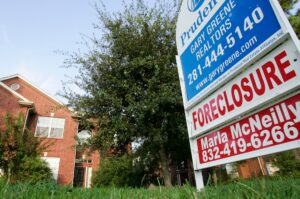Low Doc Mortgages – What Are Non-Prime Mortgages?
What Are Non-Prime Mortgages
Nonprime mortgages are loans that aren’t backed by a major lending organization such as Fannie Mae or Freddie Mac. They are a great option for homeowners with less-than-perfect credit, but with higher interest rates. Although they’re more expensive, lenders are doing a good job keeping them competitive. Nonprime mortgages are loans made to people with bad credit that don’t qualify for conventional loans.
Non-prime mortgages are different from the old “crapshoot” loans that required no down payment, no income verification, and low credit scores. Instead, lenders have to verify that an applicant can actually afford the loan and pay it back. A low down payment, high debt-to-income ratio, and low credit score may not be a problem, as long as he or she has good income and savings, and a good credit score.
Non-prime mortgages are Low Doc Mortgages that are not qualified for a safe-harbor loan. Because of the risk of a lawsuit, banks are afraid of making non-prime loans. However, as non-prime mortgages have become more popular, investment firms have taken notice. Using a process known as securitization, lenders are able to fund non-prime mortgages.
For those with lower credit scores, mortgages are available with a credit score of as low as 500. However, the down payment must be large and a co-signer may be required. Some lenders only offer subprime mortgages to borrowers with credit problems. They may require waiting periods for borrowers with less than perfect credit, or may only offer the loan if the applicant meets certain income criteria. The average credit score of non-prime mortgages will be 660 by 2022.

Low Doc Mortgages – What Are Non-Prime Mortgages?
Subprime mortgages come with higher interest rates, but don’t feel discouraged. Many people who take out an ARM are betting that their credit will improve before the variable rate kicks in. And if your income isn’t steady enough to qualify for a fixed-rate mortgage, a non-prime mortgage may be a better option. So, before you sign the loan documents, be sure to research all of the details of the loan before signing it.
Unlike prime borrowers, non-prime borrowers often have unexpected expenses. Many non-prime borrowers don’t have a minimum of $500 in savings and are unlikely to have that much money set aside for emergencies. In fact, the average non-prime borrower has less than two thousand dollars in savings. This is not enough to cover a wide range of expenses. Some types of emergencies require up to $2,000 and even more if you have a poor credit history.
Because of the risk involved, many lenders granted higher-risk mortgages. However, as rates fell and profit margins rose, many lenders were able to afford to take on this extra risk by charging higher interest rates. These mortgages were then pooled and repackaged to sell to investors as investments. During this time, a shortage of affordable housing caused prices to rise and more financing was needed to meet demand.